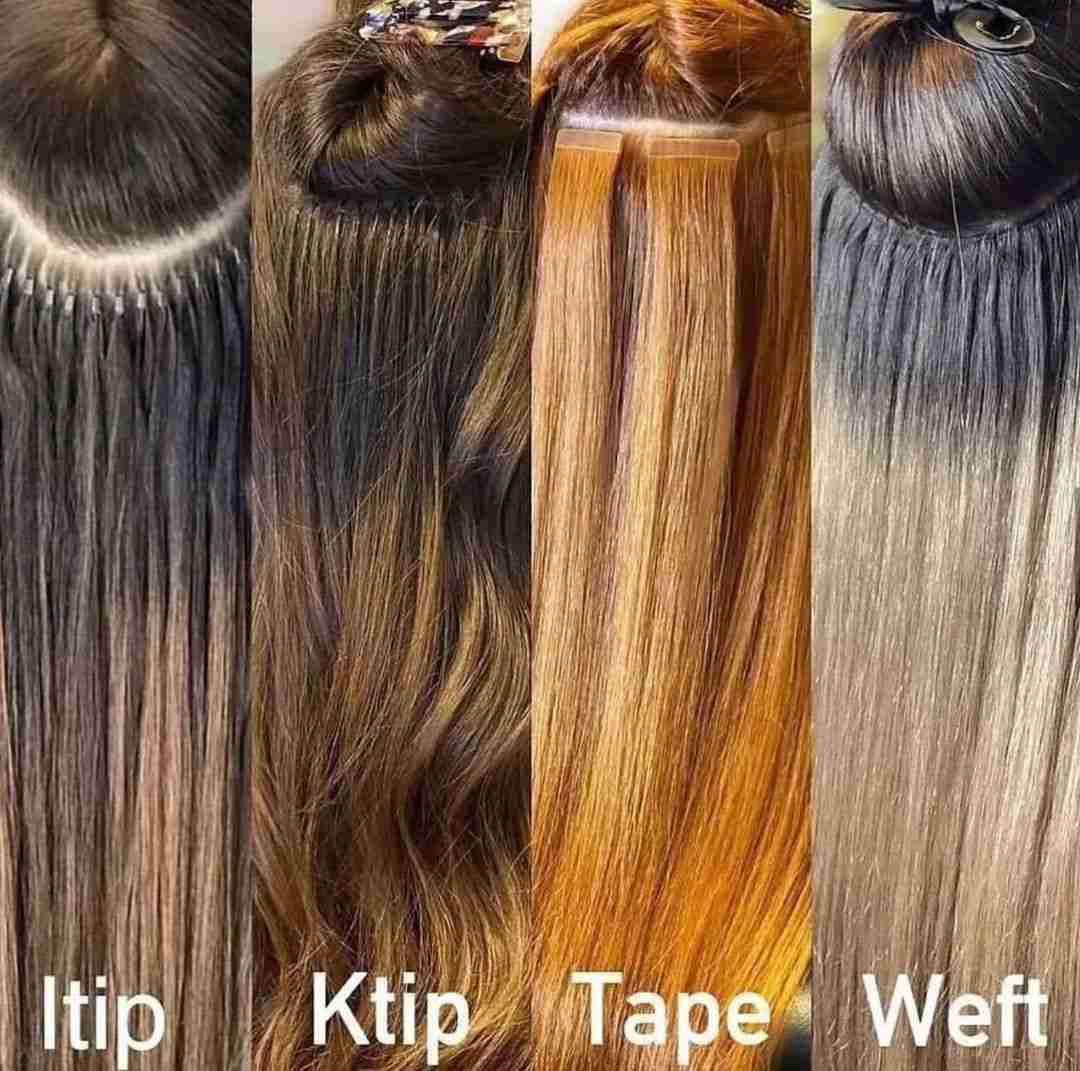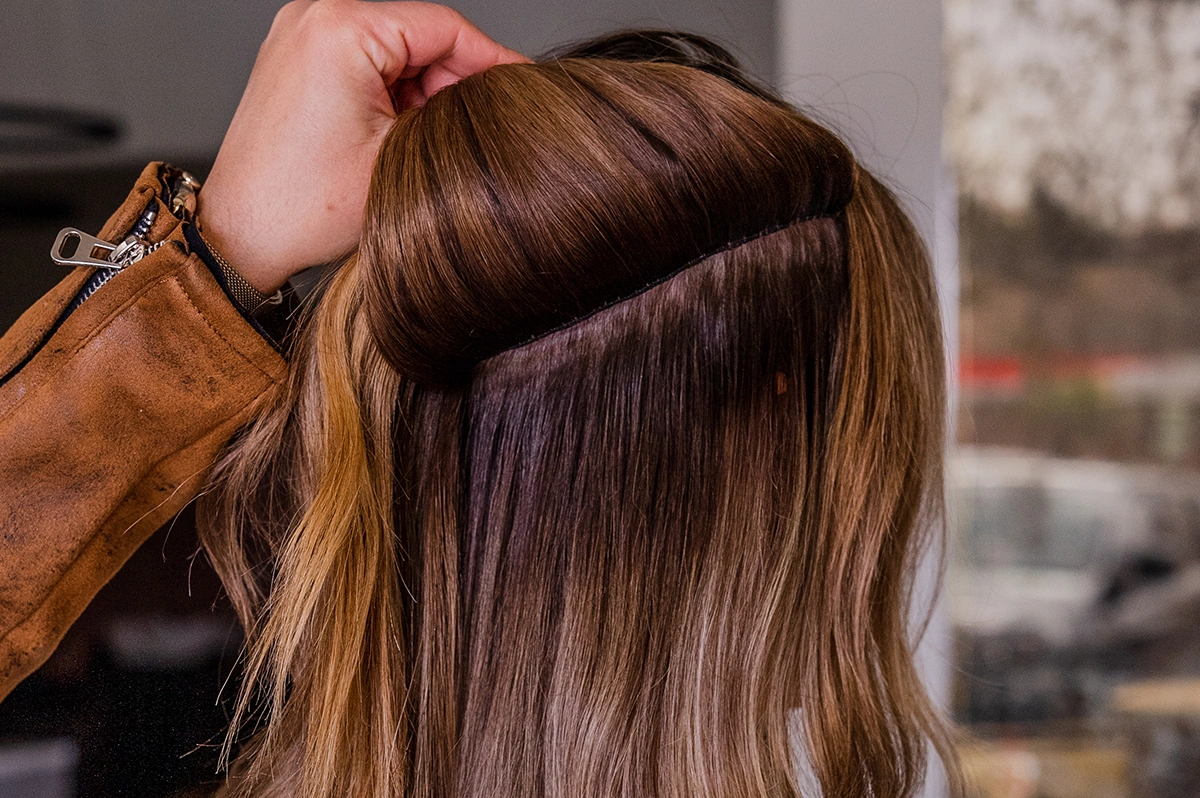The Traction Alopecia Dilemma: Why Hair Extensions May Be Costing You Your Hair
The biggest problem with hair extensions1 is traction alopecia2, a form of hair loss caused by prolonged tension on the hair follicles, leading to weakened hair roots and potentially permanent balding. This unfortunate outcome can arise from improper installation, heavy extensions dragging down your natural strands, or harsh adhesives that irritate the scalp. This isn't just an industry issue; it's personal. As someone deeply vested in the beauty sector, seeing clients' cherished locks compromised is genuinely concerning.
My goal isn't merely to highlight these problems but to offer solutions and insights that benefit both salon owners and customers alike. With the potential risk of ever-thinning hair looming large, it's crucial to examine what makes certain extension methods more detrimental than others and how to choose the healthiest options.
What is the Most Damaging Hair Extension?
Traction alopecia often becomes the focal point when discussing the downsides of hair extensions1. But not all extensions are created equal. Some specific methods inflict more damage than others. That’s where the conversation about the most damaging hair extension3 comes in.
Dive Deeper: Identifying the Culprits
Heavy hair extensions1 are the usual suspects when discussing traction alopecia2. Be it sew-ins, tight clip-ins4, or improperly bonded tape extensions, the added weight continuously pulls on the follicles, causing stress on the scalp. Let's lay it out clearly in a comparison table for better understanding:
| Extension Type | Risk Level of Traction Alopecia | Potential Damage |
|---|---|---|
| Sew-Ins | High | Scalp tension, breakage |
| Tape-Ins | Medium | Adhesive irritation, follicle stress |
| Clip-Ins | High | Hair snagging, root damage |
It's time we accept that our love affair with thick, luscious locks shouldn't come at the expense of our natural health.
What is the Lifespan of Hair Extensions?
When investing in extensions, the question of lifespan naturally arises. After all, no one wants to deal with unattractive split ends or frizz before they've had their fair share of glamour.
Dive Deeper: Understanding Durability
Different types of extensions offer varying life expectancies, largely determined by application method and maintenance. Here's a quick glance at their average lifespans:
- Clip-ins: About 3-6 months, contingent on infrequent, gentle use.
- Tape-Ins: Can last around 6-8 weeks but may require reapplying the adhesive.
- Sew-Ins: Generally last about 8 weeks; anything longer can risk hair health.
Pro Tip: Regular care, including gentle washing and avoiding harsh products, can extend the lifespan of your extensions considerably.
Do Extensions Thin Your Hair?
This is the million-dollar question everyone seems to ask. The short answer is: yes, they can if not managed properly.
Dive Deeper: Prevention is Key
Removing hair extensions1 is a delicate dance. Improper removal methods5 or prolonged wearing times are usually to blame for hair thinning6. For instance, if harsh adhesives are forcefully pulled off, they might take your natural hair with them. Let’s break it down into actionable tips:
- Ensure Professional Help: Always seek the expertise of a trained stylist for both application and removal.
- Limit Wearing Time: Avoid extending the usage time beyond the recommended period.
- Avoid DIY Removal: Skimping on removal costs could compromise your hair's integrity.
Did you know that over 60% of women who consistently use heavy extensions report some hair thinning6 over time? Now, isn't that a pause-worthy insight?
What is the Healthiest Hair Extension Method?
Given the spotlight on health-conscious choices today, it stands to reason that more people want to know about the safest methods to enhance their hair.
Dive Deeper: Healthy Alternatives
Amidst the crowded marketplace are the truly gentle methods that respect your natural hair integrity. Our hero here is the halo extension7, which slips snugly on like a halo without using any adhesives or clips. Here's why it's a game-changer:
- Zero Adhesive: No chemicals mean zero risk of irritation.
- Easy Application: No need for a professional stylist—it’s user-friendly and quick.
- Low Risk, High Reward: Sits comfortably without any tension on your natural hair.
Expert Insight: Consider brands like Plucharm Hair for top-quality, user-friendly options that honor hair health while delivering the glamor clients crave.
Conclusion
The allure of hair extensions1 is undeniable, yet they come with their set of challenges—traction alopecia2 being the most prominent risk. The secret lies in making informed decisions, not just about the brand or style but also about the application and care. Recognizing and respecting the delicate nature of our scalps is vital. By turning to healthier methods and professional assistance, we can save our natural hair from potential damage.
Whether you're a salon owner or an individual considering extensions, it's crucial to weigh these options deliberately. There's a world of difference between losing hair and styling it. So, let's strive toward choices that keep our hair dreams both alive and sustainable.
As always, feel free to connect with Plucharm Hair, where beautiful, safe, and sustainable hair solutions are our pledge to you. Visit us at Plucharm Hair for more insights and products tailored to your needs. Let's elevate hair care together, with integrity and innovation.
-
Exploring various hair extension types can help you make informed choices that protect your natural hair. ↩ ↩ ↩ ↩ ↩
-
Understanding traction alopecia is crucial for anyone considering hair extensions, as it highlights the risks involved. ↩ ↩ ↩
-
Identifying the most damaging hair extensions can prevent potential hair loss and promote healthier choices. ↩
-
Learning about clip-ins can help you understand their lifespan and whether they suit your hair needs. ↩
-
Proper removal methods are essential to prevent hair thinning; this resource can guide you through safe practices. ↩
-
Understanding the link between extensions and hair thinning can help you maintain your hair's health. ↩ ↩
-
Halo extensions offer a healthier alternative; exploring them can lead to better hair care decisions. ↩




